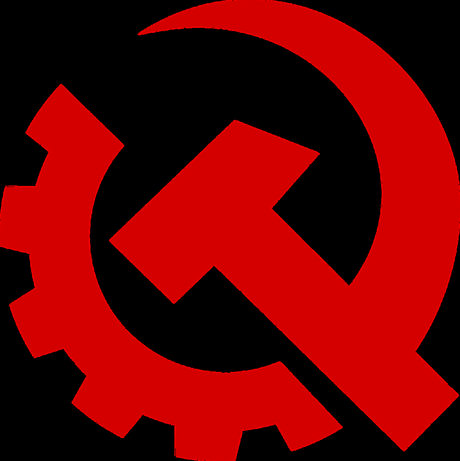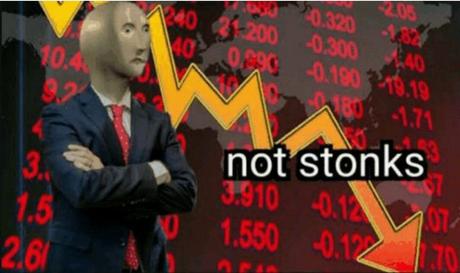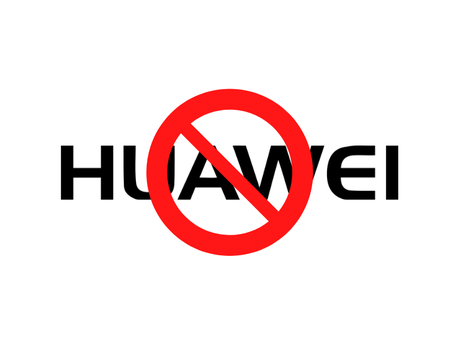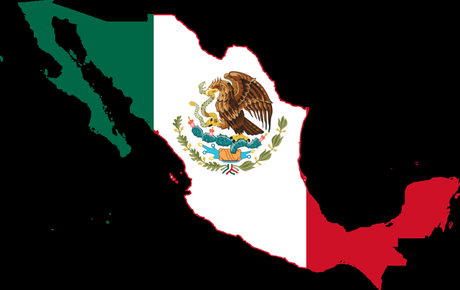China may have started reopening its factories and workers might be returning to work, but the balance of world’s economic power has already begun to shift to some other places. And not all of the reason is COVID 19 effect on Economy, the descent of China from the top spot has been forthcoming for years.
COVID 19 nearly destroyed many economies that relied a lot on non-local products and raw materials, especially those being imported from China. Some economies saw shortages in electronic components, others saw outrageous price hikes in essential products. But what makes China number 1, what would be the COVID 19 effect on economy of the world and what will it take for India to be the next super power?
Table Of Contentshide- China: The Hub of Manufacturing, the Rise and the forthcoming Demise
- 1970’s – 2000’s: Capitalism and Low Costs of Labor
- The Increase in Worker Wages
- Change in Import Tariffs Across the World and Privacy Concerns
- COVID 19 effect on Economy – Especially Chinese Manufacturing
- Who will be the biggest beneficiaries of this shift out of China?
- Vietnam
- Mexico
- India
- Cellphone Manufacturing in India
- Cheap & Educated Labor: Available
- FDI: The World’s Best
- Better Infrastructure: Required
- Shift from Service Oriented Jobs to the Dirty Work: Need of the Hour!
- Conclusion
China: The Hub of Manufacturing, the Rise and the forthcoming Demise
I would like explain the intricate details about why China rose to the top spot in manufacturing, import and export to better explain how COVID 19 effect on economy will change the scenario altogether.
1970’s – 2000’s: Capitalism and Low Costs of Labor
It all started way back, in 1970s, when China began to shift its economic policy from communism towards capitalism. They also began building specific economic zones where huge ports and factories could be built. These economic zones allowed China to maximize productivity and efficiency.

Once these zones were opened up to foreign trade and investment, China’s economy began exploding. Many Fortune 500 companies began manufacturing their products in China.
This was mainly because China could make their products with similar level of quality with significantly lower price than the West. Reasons? The remarkably low wages that Chinese workers made, and the tax laws. The Import-Export efficiencies were a big part of this shift as well.
If any competitor chose to manufacture their products outside of China, they could not simply compete on price! That would make them go out of business!
By the 2010s, one-third of all products on the planet were manufactured in China. And within the span of 50 years since 1970’s, China has turned itself around from a nation of farmers to a nation that has the second largest economy in the world behind the United States.
Now despite all of this success, there have been a few strange things that have happened over the past few years. We are talking about things before COVID 19 effect on economy, and things that have started to ruffle some feathers in China’s crown.
The Increase in Worker Wages
Just think about this for a minute: What happens when a country who builds its economy based upon low labor costs all of a sudden becomes very wealthy?
Well here’s what happened to China in 1990.
The average yearly wage in 1990 for a Chinese worker was about $150 US.
By 2005 it was $2800.
In 2015 it was $8900 dollars,
and as of this year, the average Chinese worker makes around $13500.
Even after considering inflation, that’s pretty insane surge in worker wages! Over 8500% increase in the last 30 years!
What this means today, is that the cost of making products in China has become a lot more expensive than it used to be.
Companies can’t continue production for up to an eighty percent margins in China anymore like they used to, and because of this, we have actually began to see a decline in manufacturing in China in 2016. For the first time in the country’s modern history, their manufacturing output was reported to decrease by 2%. Remember, COVID 19 effect on economy did not have anything to do with this. But the success of China’s economy was only the first factor leading to the decrease in its manufacturing output.
 Not Stonks!
Not Stonks!
After 2016, China once again saw modest increases in manufacturing output until the United States, among many other countries including India, put extra taxation on imports from China.
Change in Import Tariffs Across the World and Privacy Concerns
The increase in import costs around the globe caused a decrease in Chinese exports to the US by seven percent in 2019. This forced many companies to begin looking for product sourcing in other countries.
And if that wasn’t enough, privacy concerns and tensions between China and the rest of the world have been on the rise ever since the country began taking over part of the world’s tech sector.
 Huawei Banned in the US
Huawei Banned in the US
Since then, governments around the world have been actively trying to push Chinese technology out of their countries while also incentivizing businesses to make their products domestically instead of China.
And all of these things that I just mentioned from rising labor costs to geopolitical issues have led us to today, and then happened: the chaos due to the pandemic.
COVID 19 effect on Economy – Especially Chinese Manufacturing
Even though this China sourced manufacturing has been slowing down over the past decade, the country still remained the largest manufacturer in the world. So once the Coronavirus pandemic rose out of Wuhan and caused a shutdown of China’s manufacturing sector, many countries began to run out of essential goods that they needed. This was simply because they relied upon China to produce them and had no backup plan.
So for example China is the leading manufacturer of medical equipment in the world so when the world needed an increase in the supply of masks, ventilators and gloves they could no longer get them from their relied upon manufacturer!

China is also the second largest producer of drugs and medicinal ingredients in the world. Unsurprisingly, when the pandemic hit, roughly 100 commonly used drugs were reported to be in a shortage by the FDA in the US.
These shortages didn’t just hit the medical sector, but they hit virtually every other industry all of a sudden. Small businesses looking to get inventory for tech, fashion or any other kind of business began to see one to two month long delays on their orders and this seemed to be the final straw for most of the world to change their manufacturing strategy.

You see, many companies in the last several months have realized that they had too many eggs in one basket, and relied too heavily upon one nation in order for their business to run properly. So we have started to see a shift!
Now, due to COVID 19 effect on economy, as China’s manufacturing sector beacons to shrink and every other nation around the world begins to look to other countries to source their goods from, we have a very important question in front of us.
Who will be the biggest beneficiaries of this shift out of China?
Well the first of which is another Asian country that has been quietly going through an economic boom over the last several decades, even so after COVID 19 effect on economy of China.
Vietnam

In the year 2000, Vietnam was a nation experiencing extreme poverty throughout the population of nearly 100 million residents. In fact, the GDP per capita of Vietnam was a mere $390! Then, they were dealt a gift from the economic gods as China’s population began to become somewhat wealthy.
In the 2000s, apparel companies like Nike began building factories in Vietnam because it became substantially cheaper to manufacture some products in Vietnam as opposed to China. And in the following decades many other companies began to do the same as China’s wealth began to accelerate. In the 2010s, Vietnam’s manufacturing sector began to accelerate as well.
Today Vietnam is now considered a middle-income country with a GDP per capita of roughly $3,000. Keep in mind that this shift from extreme poverty to middle income has occurred within just 20 years, making it one of the fastest growing economies in history!
And if this trend were to continue, we could see a Vietnam surpassed the likes of the United Arab Emirates, Singapore, Iran and even Hong Kong in terms of economic power within the next several decades, especially after COVID 19 effect on economy of the world.
Mexico

Another country that has benefited a lot from China’s manufacturing downturn especially over the last two years has been Mexico.
Tempest Capital has estimated that Mexico will be receiving between 12 billion and 19 billion dollars in Chinese manufacturing redirects per year for the near future.
In fact one survey of 160 executives (read the full survey report here) by Foley and Lardner suggested that two-thirds of large corporations in the United States were planning on moving at least part of their manufacturing base out of China and into Mexico within two years.
Now who knows how many of these companies will actually follow through with their plans, but there’s a lot of data that shows how Mexico is already becoming a bigger manufacturing hub of the world.
For example, in 2017, Mexico’s exports to the United States have increased by roughly 14% to a whopping $320 billion. Just in perspective, that is about 42% of what China exports to the United States. So they’re still quite a ways away but they are gaining ground every single year.
But arguably one of the most intriguing countries that has benefited in recent years, yes you guessed it right, is India.
India

India has about the same population as China with 1.3 billion people, but the difference is that India is still largely an agricultural society with a much poorer infrastructure. Roughly half of the workforce in India still works in some way in the agricultural sector. Just for comparison, roughly five percent of the American population works in agriculture.
Regardless, since 2002, India’s economy has grown from a GDP per capita of $470 to roughly $2100 in 2020 and this economic growth has resulted in India lifting more than 300 million of its citizens out of poverty over the last 18 years.
But here’s the thing: unlike a country such as Vietnam, India’s growth has not come from manufacturing. That has actually come from service based industries like banking, retail and information technology.
Except, there was one economic experiment that began being run at the start of 2014 and that was cellphone manufacturing.
Cellphone Manufacturing in India
At the start of 2014, India was manufacturing about 10 million cellphones a year. But by the end of 2019, India was producing roughly 150 million cell phones per year and quickly became the second largest cellphone manufacturer in the world!
And despite this massive ramp up in manufacturing of cell phones India’s infrastructure is still seen as too inadequate right now for us to become the next China. But with big investments from companies like Apple, who have begun making some of their iPhones in cities like Chennai, we might see an expansion of India’s manufacturing sector in the near future. One key advantage that India has is a large young workforce and an extremely low cost of labor.
Cheap & Educated Labor: Available
Currently in India the average manufacturing laborer makes about $5 per day meanwhile the average Chinese manufacturing labor makes about $28 per day. This has made India a more attractive place for some companies to take a risk and manufacture their products in India, even if they run into some infrastructure problems along the way initially.
FDI: The World’s Best
The FDI (Foreign Direct Investment) figures for India are simply astonishing for any country. Having the lowest interest rates has made India a popular attraction for investors all around the globe. In 2019 itself, India attracted a total direct investment of whopping $49 Billion from foreign investors!
Better Infrastructure: Required
So if we were to fix their infrastructure and capitalize on manufacturing in the same way that China did in the 1990s, we might see India become the third true economic superpower of the world behind the united states and china. But again, that is a big if, so even though there are some countries like us that are benefiting from China’s downturn in manufacturing, that does not mean that China will be giving up its mantle for being the world’s Factory anytime soon. Especially, if we are not to capitalize on the COVID 19 effect on economy of the world.
Shift from Service Oriented Jobs to the Dirty Work: Need of the Hour!
If we were to make India the biggest and the best manufacturing hub in the world, we need more people trying to innovate and to do the dirty jobs. Not the suit and the boot job, but we actually need people that are not afraid to get their hands dirty. Sure, 10 hours of day inside a humid and oily factory seems a lot of hassle, but believe me when I say this: If we can’t catch up right now, it might be too late. COVID 19 effect on economy won’t stay forever, and you don’t want to let this opportunity slip away.
Conclusion
Some say, that within 50 years with enough advancements in AI and robotics, many products will be produced domestically by each country.
Even after the COVID 19 effect on economy, China will desperately try to hold on to the crown. But we are to decide and act today, India is in the best spot to grab the opportunity and be the next super power in the world.
But, if that doesn’t happen within the next half century, there is an entire continent with a large population and cheap labor force that is already being viewed as an economic battleground between the United States and China. Africa has a great potential; but even bigger problems with regards to infrastructure and education to beat any other country in this manufacturing prowess race.
If you liked this article, head to the homepage and see which category of posts you like the most. Be sure to subscribe to the newsletter so that you keep yourself updated!

